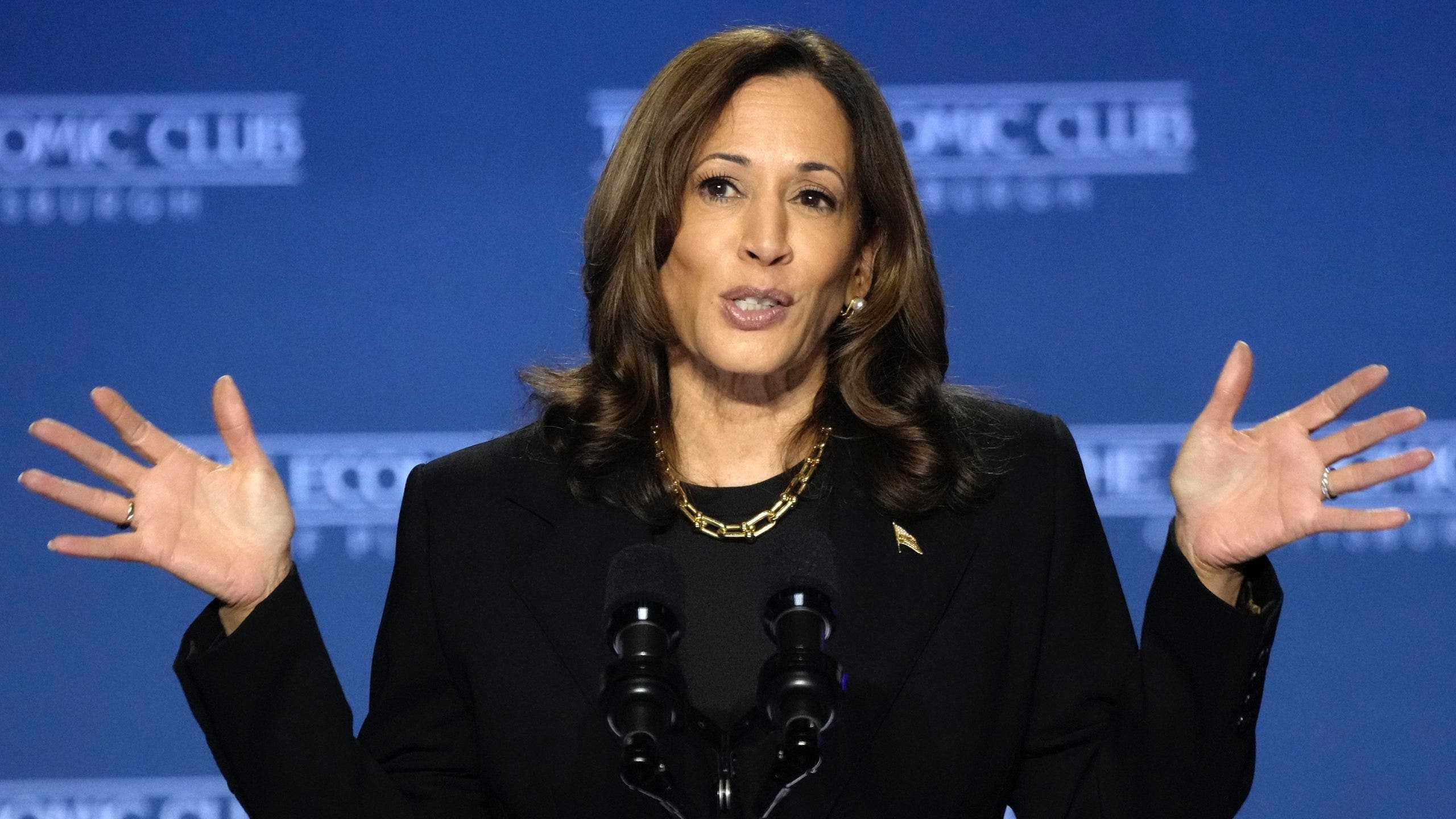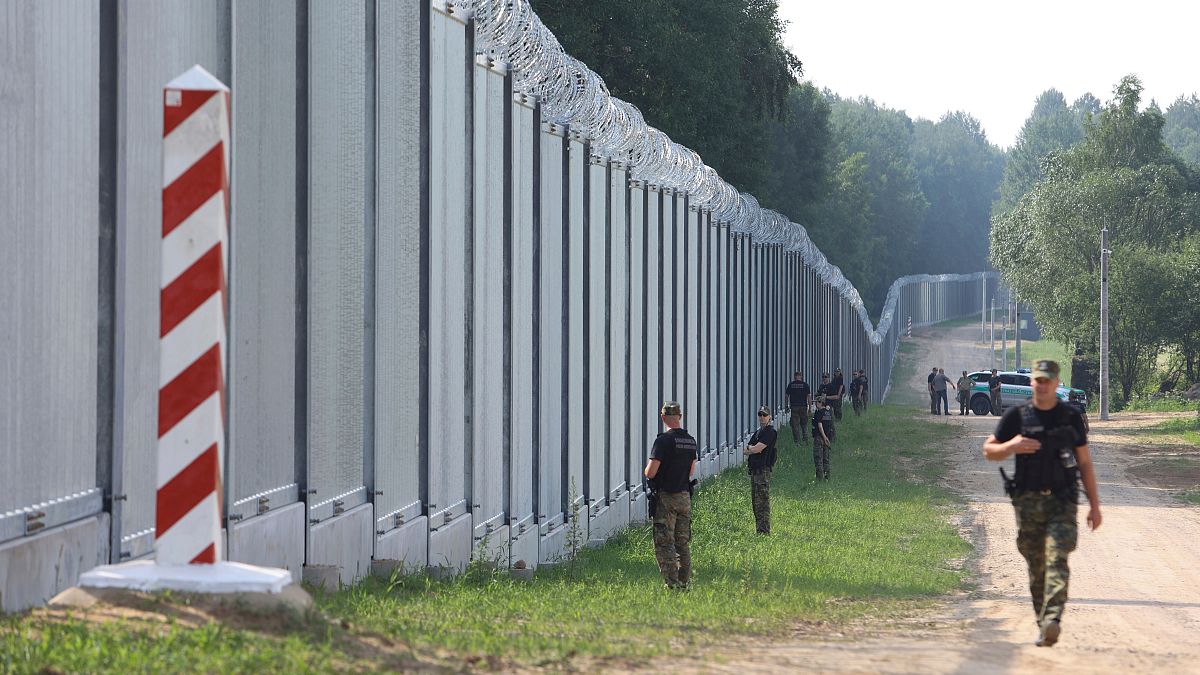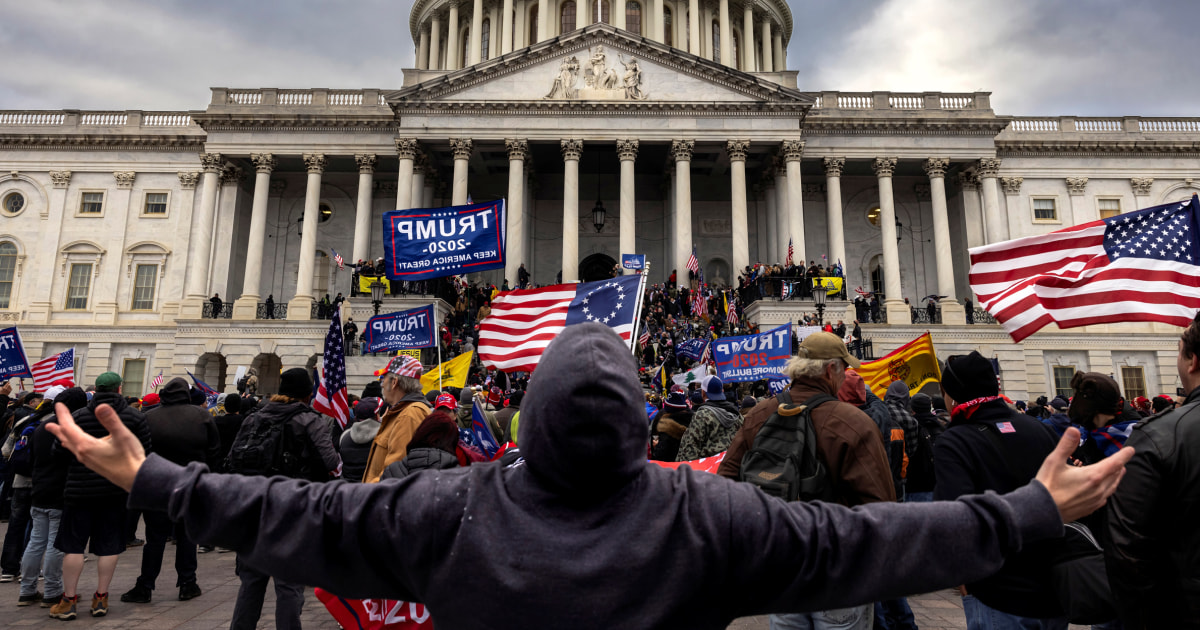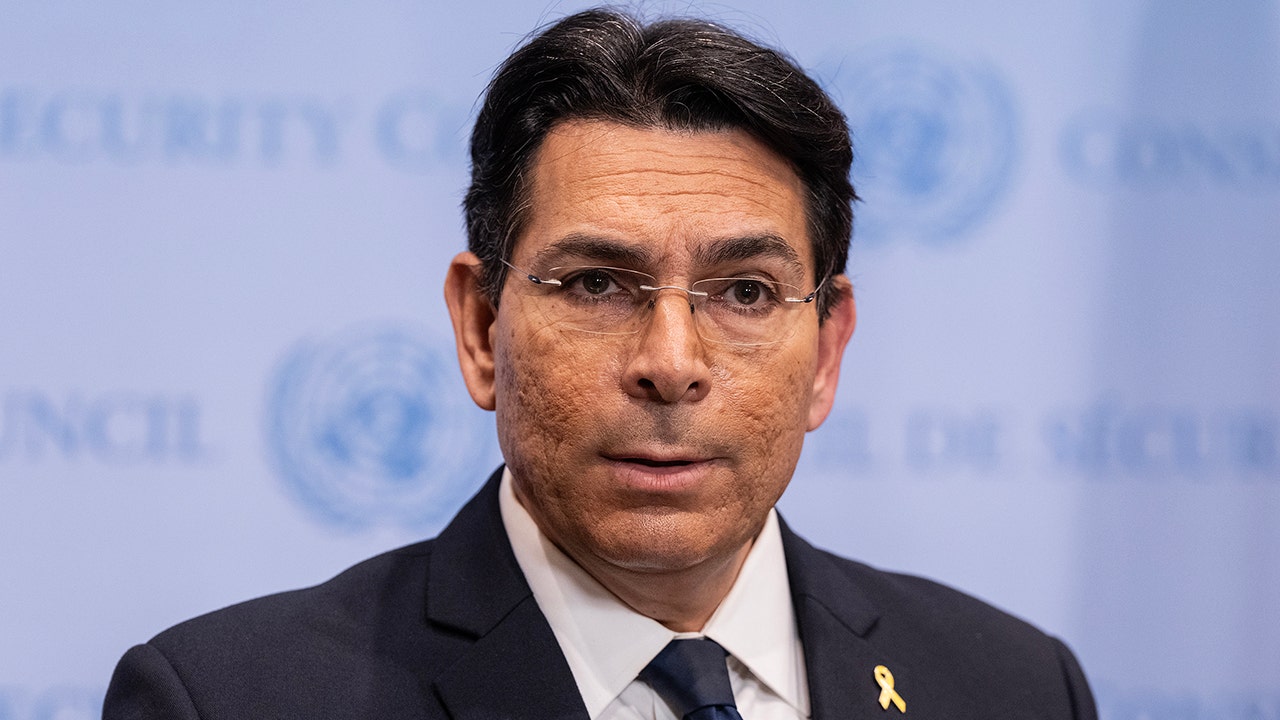Sports
Robert Saleh is asked if wearing Lebanese flag caused Jets firing – how did he respond?
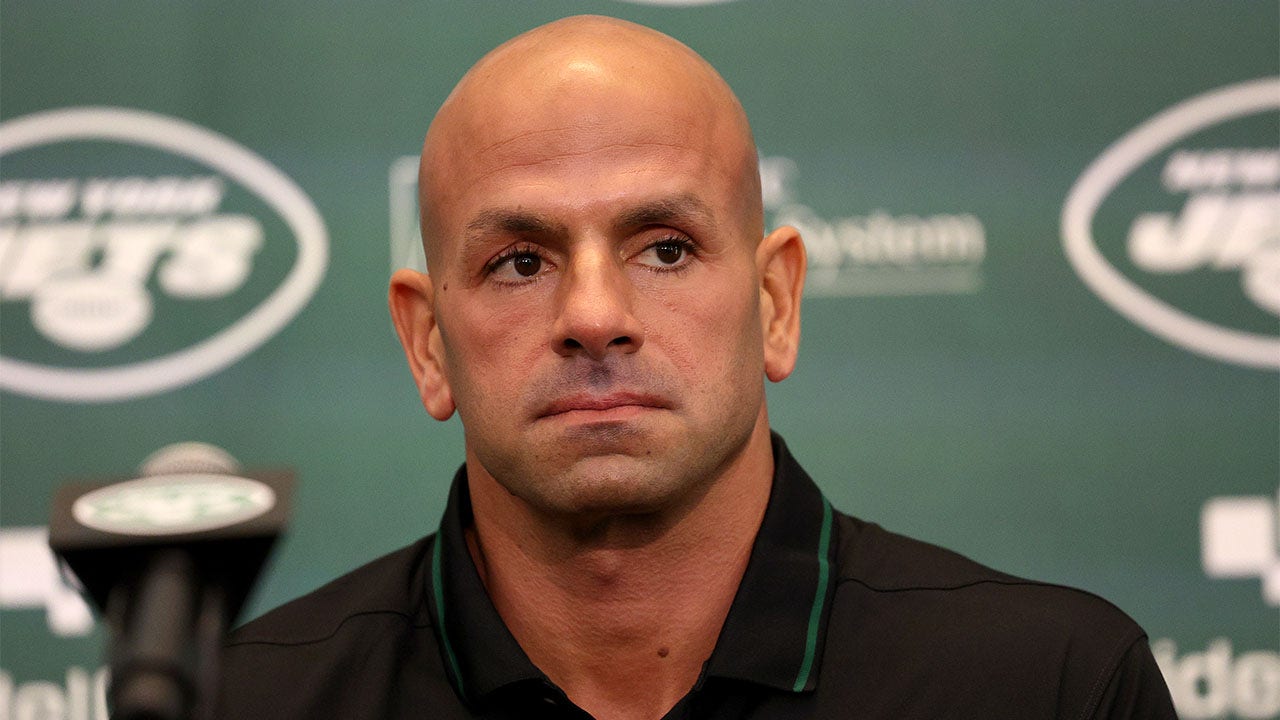
Robert Saleh was seen pubically for the first time since being fired as the head coach of the New York Jets
The former coach was seen shopping at a local Whole Foods in northern New Jersey this week in footage obtained by TMZ.
In the footage, Saleh was asked if he believes wearing the Lebanese flag in his last game as head coach played into him being fired just five games into the season.
Saleh did not respond to the question, and eventually drove off.
The Jets fired Saleh after a loss to the Minnesota Vikings in London. Jets Chairman Woody Johnson confirmed that he made the decision by himself in a statement on Oct. 8.
“This was not an easy decision, but we are not where we should be given our expectations, and I believe now is the best time for us to move in a different direction,” the statement read.
During the loss in London, Saleh was seen wearing the pin on his jacket. The decision to wear the pin came amid ongoing attacks on the nation by Israel in the days prior to the game.
New York Jets head coach Robert Saleh at MetLife Stadium, Dec. 24, 2023. (Kevin R. Wexler/USA Today Network)
Saleh is of Lebanese descent and was the first Muslim head coach in NFL history. Both of Saleh’s parents were born in Lebanon and immigrated to the United States ahead of his birth in 1979. Saleh previously wore the Lebanese flag on his arm during a game against the Giants, just weeks after Hamas terrorists attacked Israel on Oct. 7, 2023.
Saleh wore that patch during the week that NFL executive vice president of club business Peter O’Reilly released a statement encouraging players to represent their heritage via decals on the back of their helmets with their flags, while coaches added a patch to their team gear.
49ERS COACH KYLE SHANAHAN EXPLAINS WHY HE WAS ‘PRETTY SHOCKED’ JETS FIRED ROBERT SALEH
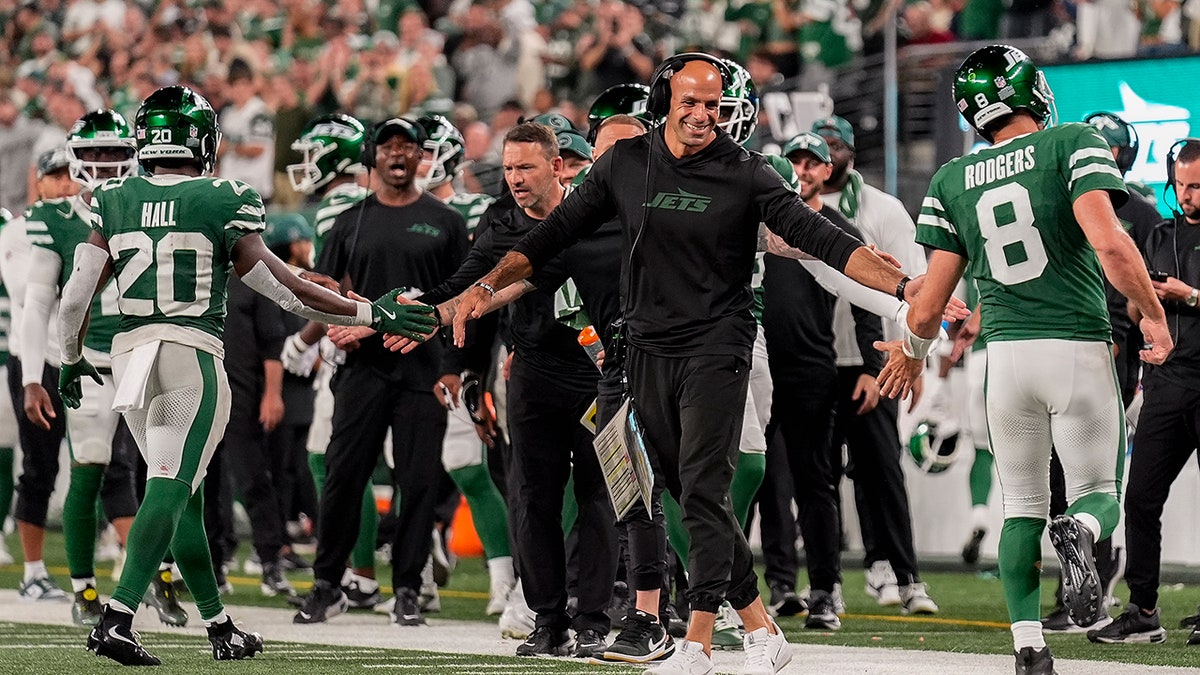
New York Jets head coach Robert Saleh congratulates running back Breece Hall and quarterback Aaron Rodgers after a touchdown against the New England Patriots, Sept. 19, 2024, in East Rutherford, New Jersey. (AP Photo/Seth Wenig)
Shortly after Saleh’s firing, the Council on American–Islamic Relations (CAIR) released a statement that called on the Jets and Johnson to explain multiple reports that Saleh was allegedly escorted out of the building by security following his firing, and also brought up the fact that Saleh was fired just days after wearing the pin.
“We commend coach Robert Saleh for making history as the first American Muslim head coach in NFL history. Although no one should jump to conclusions about why the Jets fired Coach Saleh, the report that Jets security physically escorted Saleh out of the building does raise concerns about the possible motive for such unusual hostility – especially given that Saleh wore a Lebanese flag pin at a game just days ago.”
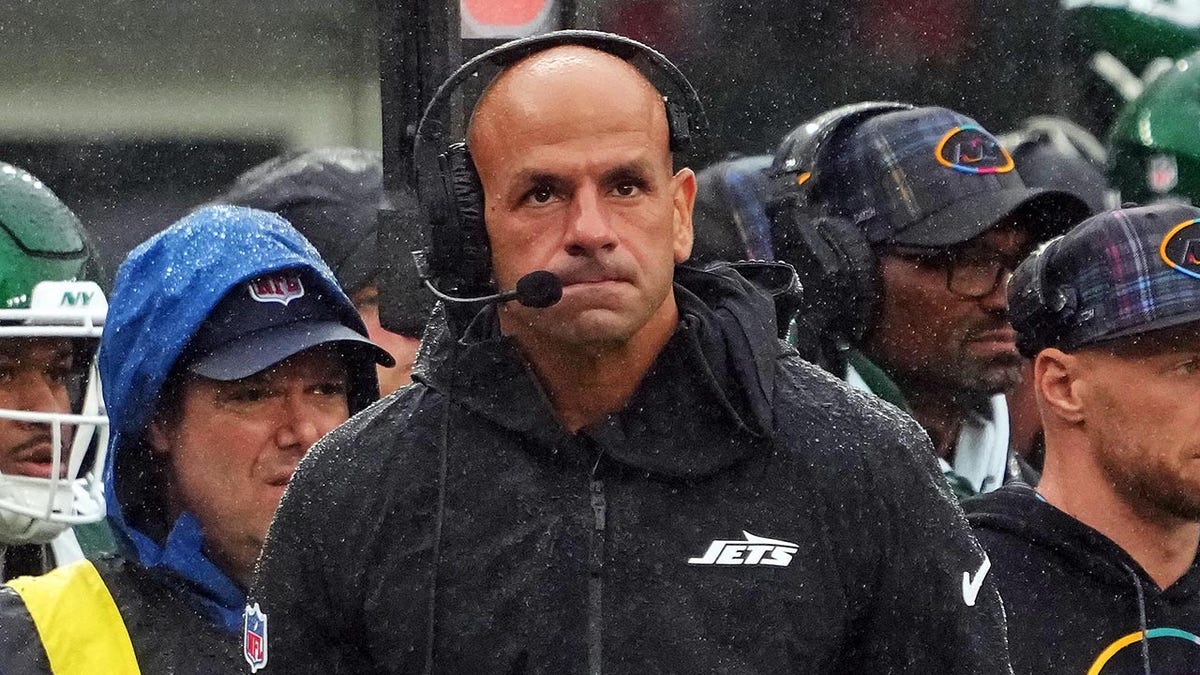
New York Jets head coach Robert Saleh on from the sidelines against the Denver Broncos at MetLife Stadium. (Robert Deutsch-Imagn Images)
Fox News Digital has previously reached out to the Jets for comment on CAIR’s statement but has received no response.
Meanwhile, Saleh released his own statement in which he thanked the Jets for his tenure with the team on Oct. 9.
“To the Jets Organization, I am grateful to have had the opportunity to work with so many incredible people. I will always be appreciative of the love and support from everyone at 1 Jets Drive,” he said in a statement to ESPN. “To the most passionate fan base in the NFL, thank you for embracing my family. It has been a pleasure calling New York our home and we will forever appreciate all of the memories that were created here. “
Follow Fox News Digital’s sports coverage on X, and subscribe to the Fox News Sports Huddle newsletter.

Sports
How Taylor Swift’s F1 concert helped save the United States Grand Prix

Stay informed on all the biggest stories in Formula One. Sign up here to receive the Prime Tire newsletter in your inbox every Monday and Friday.
An earlier version of this article misidentified the manager in 2015 for Taylor Swift as Scooter Braun.
As Formula One returns to Austin, Texas, for this weekend’s United States Grand Prix, one of the sport’s other American venues is also occupied with a major event.
Miami’s Hard Rock Stadium, the centerpiece for the grand prix held at the start of May, will be used for three nights of Taylor Swift’s record-breaking Eras Tour, which begins its final stretch of North American dates this week.
Both F1 and Swift have experienced extraordinary surges of popularity in recent years in very different realms. But eight years ago, they shared top billing at the Circuit of The Americas.
The 2015 event, at which Swift played a concert on the Saturday night after qualifying, proved to be critical for the future of the United States Grand Prix, a race that has since been the cornerstone of F1’s rapid American growth.
“It was a big-dollar commitment at the time, and it paid off,” COTA chairman Bobby Epstein told The Athletic. “We’re grateful to Taylor for taking the chance.”
F1’s current foothold of three American races would have been unthinkable a decade ago when holding one grand prix stateside was a considerable achievement. There had been a five-year absence for F1 in America between the final event at Indianapolis in 2007 and its return in 2012 at COTA, the first purpose-built facility for the sport in the United States.
COTA quickly became one of the drivers’ favorite tracks thanks to its challenging, undulating layout, and it was popular with fans. The first year pulled in a Friday to Sunday race weekend attendance of 265,000 — which looks small compared to the 2022 record of 440,000, reported by F1 — as crowds flocked to see the sport’s return to the United States. Even with a calendar fixture toward the end of each season, giving the potential of seeing a race that could influence the crucial part of a championship battle, there was a struggle to build greater interest. The weekend figures dropped to 250,000 for 2013 and lower still to 237,000 in 2014.
But the 2015 race left serious doubts over the future of the grand prix in Austin. As Hurricane Patricia brought record rainfall and high winds to Austin, FP2 was canceled, and qualifying was postponed to Sunday morning after three hours of rain delays. After long waits at the track hoping to see some on-track action, the disappointed fans had to contend with the grass parking lots turning into mud baths, making getting in and out of the track challenging.
Sunday’s grand prix went ahead on schedule as Lewis Hamilton clinched his third world championship, but weekend attendance dipped to a low of just 224,000, leading to concerns about the event’s popularity.
Hurricane Patricia made the 2015 U.S. GP a dour affair. (SIPA USA)
There was also a fresh challenge to fund the United States Grand Prix. In the weeks after the race, Governor Greg Abbott’s office announced it would cut $6 million in state funding for the grand prix. Bernie Ecclestone, then F1’s CEO, admitted at the time that it looked challenging to see a future for the race in Austin.
It left Epstein and his team looking for new ways to boost the event’s fortunes if they wanted to help secure the long-term future of F1’s only American grand prix.
“We had a lot of people very upset about the experience they had with the rain and the mud, and we needed to make it up to them,” Epstein said. “We put in a lot of sidewalks, and we paved a lot of parking lots, and we got a lot more buses. But on top of it, we wanted to do better and offer more.”
That is where Taylor Swift came into the picture.
Austin’s reputation as a music city meant adding concerts to the race weekend offering had always been a big part of COTA’s identity. Kid Rock and Elton John were among the first headliners, but as plans came together for 2016, Epstein and his team looked for the biggest star possible.
Epstein contacted Swift’s team, wanting to see if she would be interested in being the 2016 race headliner. Swift had no performances scheduled for the year, having spent the entirety of 2015 on her “1989” album world tour.
If any diehard Swifties were desperate to see her in concert that year, they would have to go to the F1 race. Suddenly, a United States Grand Prix ticket became much more valuable. A three-day general admission ticket started at $150 and would include access to the concert.
“We remember the massive amount of criticism we took from the race fans when we said we were going to bring in a performer like that, that it was taking attention away from the racing,” Epstein said.
Ecclestone was among those to share some concern, semi-jokingly asking Epstein if he should even bother to bring the F1 cars to COTA.
After watching Hamilton lead a Mercedes front row lockout in qualifying on Saturday, 80,000 fans stayed well into the evening at the track to watch Swift’s show from the infield, making it — at the time — one of her highest-attended shows. The 15-song set mainly featured songs from “1989” and “Red,” and there was no new material, but it did have a first performance of “This Is What You Came For,” a song that Swift wrote for Calvin Harris and Rihanna.
The concert received rave reviews. Billboard called it a “knockout performance,” while Rolling Stone said, “it showed no drop off or rust from a star determined to remain one of the biggest names in music for a long time to come.” How true that would prove.
Swift closed out the set with “Shake It Off,” which fit the mood of COTA’s weekend. After all the struggles of the previous year, it had drawn a record crowd of almost 270,000 fans who enjoyed good weather and good music on top of the racing action. It was an important bounce-back after the 2016 washout, proving that F1 had a bright future in Austin.
It also helped draw in a very different demographic of attendees as younger fans, more women and more families attended. “When we look back, we feel validated for the vision that this group had to do that and offer more to the race fan and allow them to bring family members,” Epstein said. “You can give a very full amount of entertainment, and not at all compromise the quality of the on-track action. You don’t have to take anything away from the race by giving more to the fans.”
The change in F1’s fan demographic to become younger and more diverse has been a core part of its recent growth, particularly in the “Drive to Survive” era. But Epstein felt COTA had been ahead of the curve thanks to its off-track offerings.
“I don’t know if we’re given any credit for it, but we’ll take it because it’s true,” he said. “We started (it), we did. We got a much younger audience starting to watch and pay attention to that, because of Taylor, Justin Timberlake (the 2018 headliner), and Ed Sheeran (2022).
“You start looking at some of those, and that’s who was paying attention to those artists, with Instagram and things that people post on, it very quickly reaches that demographic and that generation.”

Fans explored the track during qualifying as they waited for the Taylor Swift concert. (AP Photo/Eric Gay)
COTA’s model of having a huge headliner perform on a race weekend has become common in F1. Under Liberty Media, which completed its acquisition of F1 in early 2017, grands prix have now been turned into multi-day events where the off-track entertainment is a big part of its offering to fans.
However, even with the addition of new American events in Miami and Las Vegas, each of which has its own appeal, the concerts have remained a big part of the United States Grand Prix’s identity in Austin. Sting will headline on Friday before Eminem performs on Saturday night. Like Swift in 2016, it will be his only live show of the year.
Epstein expected that with changes made at the track to allow even more fans to attend, it would likely break Swift’s record at COTA and draw in a crowd of 100,000 people.
“It’s a fun event to play, just the way that the whole setting is,” Epstein said. “I think the agents and the performers know about it now. It has credibility, and it’s something that they want to be named the headliner for the United States Grand Prix.
“Playing at the halftime of the Super Bowl is a pretty well-recognized honor for performers. I think playing the US Grand Prix is also an honor.”
With more than 12 months until the 2025 race — which will mark 10 years since F1’s low point in Austin, when the future of the sport in the United States looked to be in doubt once again — Epstein is already engaged in conversations about the next headliners. He said getting a big name was “somewhat expected of us.”
“I know the conversations we’re having for 2025,” he said. “I’m pretty excited about it.”
Top photo: Sipa USA
Sports
Dominant Ventura flag football quarterback Ava Ortman driven to see her team shine
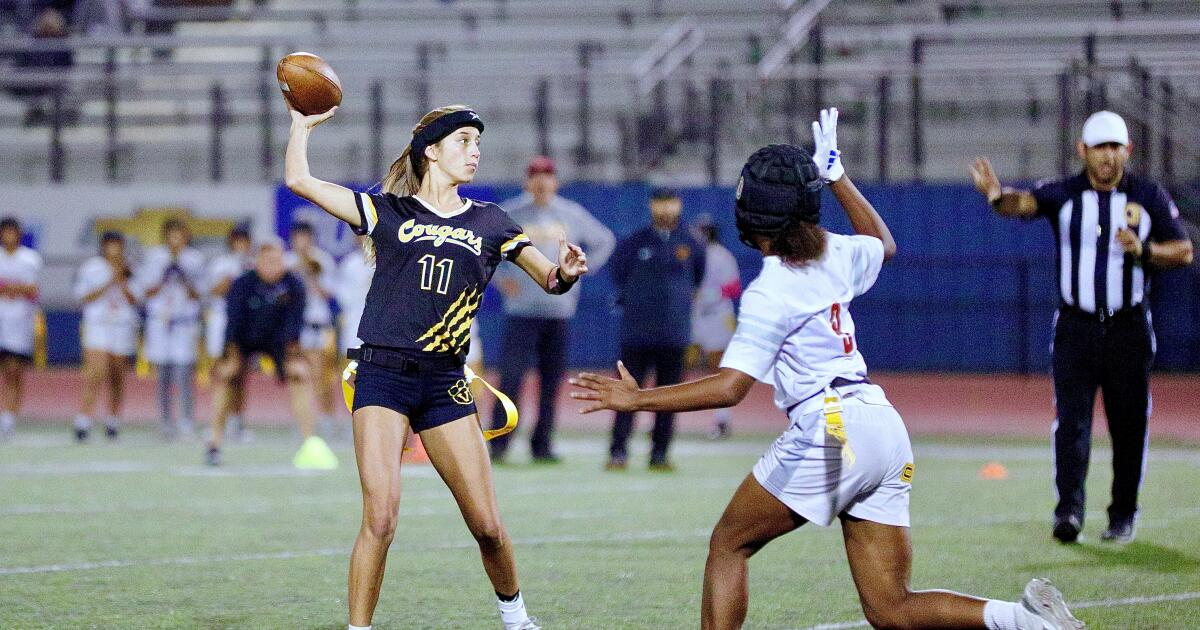
The Southern Section is home to many of the best high school quarterbacks in the country and yes, that goes for flag football too.
Los Angeles County standouts include Lexi Loya (Lakewood St. Joseph), Haley Ramos (South Hills), Claire Heisinger (Agoura) and Kenzie Paimany (Long Beach Poly).
Orange County features Makena Cook (Orange Lutheran), Madi Lam (Santa Margarita), Maia Helmar (Newport Harbor), Roxie Shaia (Huntington Beach) and Bella Conteras (Rosary).
Riverside County has Karissa Green (Roosevelt) and Feli Solomua (Corona) while Western Christian freshman Maliyah Estrada is a rising star in San Bernardino County.
In Ventura County, no flagger does it better than Ventura High junior Ava Ortman, who is among the state leaders in touchdowns and is equally effective running the ball. She is the quintessential dual-threat quarterback, having improved in both aspects since last year when she threw for 3,849 yards and 44 touchdowns and rushed for 643 yards and three scores on a struggling squad with a sub-.500 record. She tried out as a receiver but quickly transitioned to quarterback, where she has excelled.
This fall, the Cougars are 23-5 and ranked in the top 20 in California, and their athletic signal caller is a major reason why. She is also a guard on the school basketball team and an outfielder on the softball team, but she admitted football is fast becoming her passion, following in the footsteps of her older brother Tyler, who was an offensive lineman for the Cougars.
“This is my favorite sport — it brings me joy,” Ortman said upon reaching the triple-digit milestone this season with three touchdown passes Wednesday night against Dos Pueblos in the third-place game of the Channel League Tournament at Ventura College. “Recently, I’ve been running the ball more, but whatever it takes is fine. I want to win more than anything. We weren’t that good last year, but we’ve learned a lot since then and we’ve gotten so much better. I’m confident we can go far in the playoffs.”
Ortman prefers to talk about the team and let her individual stats speak for themselves. Through 28 games she has a .676 completion percentage, connecting on 560 of 828 attempts for 6,379 yards and 101 touchdowns. She has rushed for 1,346 yards and eight scores and plays free safety on defense. She has thrown five or more touchdown passes eight times this season and only once has she failed to throw at least one — that being Tuesday’s 8-7 upset loss to Oxnard when she was intercepted four times.
Nearly half of Ortman’s scoring strikes have been to fellow junior Kaiya Cooke, who leads the county with 189 receptions, 2,357 receiving yards and 40 touchdown grabs.
Sophomore Mya Rodriguez has 176 receptions for 1,919 yards and 29 touchdowns while Makalya Halley has added 100 catches for 826 yards and 12 touchdowns.
Ortman is averaging 11.4 yards per completion (227.8 per game) with a passer rating of 117.0 and she averages 10.4 yards per carry. The Cougars’ offense has produced 900 points, an average of 32 per game.
“Ava’s greatest attribute is the ability to make her teammates better,” Ventura coach Frank Jordan said. “She has good communication with her receivers and has become a true leader. She was new to the game last year but was eager to learn. She took that challenge and ran with it and just like any other effective quarterback, is adept at reading the defense. She prides herself on being accurate. If one of her receivers drops the ball, Ava blames herself because she wants to make a more catchable pass.”
Ortman accounted for eight touchdowns — six through the air and two on the ground — during a 60-0 rout of Oxnard Pacifica on Oct. 2, but her most efficient performance came a week earlier when she completed 34 of 44 passes for 374 yards and six touchdowns without an interception in a 39-12 triumph over Santa Barbara. On Oct. 9, she achieved a near-perfect quarterback rating of 151.6 after she was successful on 26 of 31 throws for 298 yards and six touchdowns in a 40-0 shutout of Buena.
Yet her coach believes the best is yet to come.
“Ava is very resilient,” Jordan said. “If she misses a few throws you know she’ll make them the next game. She’s that competitive and she’s all about improving.”
Sports
Saudi Arabia’s coveted Masters 1000 tennis tournament has stalled as Six Kings arrives in Riyadh

One by one, they pull up at the St Regis Hotel in Riyadh.
Jannik Sinner, Carlos Alcaraz, Rafael Nadal, Daniil Medvedev and Holger Rune have arrived — only Novak Djokovic is yet to join the biggest stars in men’s tennis in accepting flowers, taking tea and talking with Turki Alalshikh, chairman of Saudi Arabia’s General Entertainment Authority (GEA).
They are the show and they are here in the Saudi capital for another. One of the richest exhibitions in tennis history, a $15million (£11.9m) bonanza the kingdom has called the ‘Six Kings Slam‘. The winner will take home $6m. Just being there earns over $1m.
Two weeks later, the WTA Tour will arrive for its season-ending finals, another $15million payday for the top eight women’s singles players of the year and the best women’s doubles teams. The ATP Next Gen Finals, an event featuring the top eight men in the rankings aged under 21, will come to Jeddah, Saudi Arabia’s second biggest city and commercial center, in December.
For the rest of the season, this Gulf nation will assume the role of the heart of the tennis universe, as unlikely as that might seem for a country where people barely play the sport and important tournaments have never taken place. After years of pushing, everything looks ready for Saudi Arabia’s billion-dollar move to become a major force in tennis to take off — with one major hitch.
After months of back-and-forth negotiations and due diligence between the kingdom and the entities that control tennis, the proposal for a major, mixed, 1000-level tournament (one rung below the four Grand Slams) to be held in Saudi Arabia in January or February is still at least three seasons away, a loose gesture at seismic change only slightly more fleshed out than it was a year ago when it set the sport aflame.
GO DEEPER
Saudi Arabia’s new $1billion proposal and the battle to control tennis
The biggest asset of Saudi Arabia’s three-headed push into tennis remains just an idea, with uncertainty on both sides over the tournament’s size, timing and financing. There remains no guarantee it will come to fruition. There has been no decision on who will participate or how much it will all cost, according to people briefed on the discussions who remain anonymous because they are not authorized to speak publicly about them.
The proposal has become such a question mark that it barely figured in meetings between the ATP and WTA Tours and the four tennis associations that control the Grand Slams at this year’s U.S. Open. Months of discussions between Saudi sports leaders and ATP executives — closely watched by WTA leaders — have failed to bring an agreement on even the most basic tenets of a tennis tournament:
- When should such an event take place?
- Will it be for just the top 56 men, or will it be a larger draw?
- Will it be a mixed event, as the Saudis would prefer, bringing the tournament on par with other 1000-level tournaments, such as Indian Wells, Madrid and Rome — some of the most prestigious of their kind?
Mounting complaints from players about the length and logistics of the sport’s current schedule have further complicated the discussions. Tour officials know this is not the moment to announce a new mandatory tournament, especially one that could shorten an off-season that most agree is already too brief.
Moreover, the answers to the questions above will significantly affect how much money the event might produce, and how much Saudi Arabia’s Public Investment Fund (PIF) wants to invest in the venture through its sports unit, SURJ Sports Investment. The grand promises of 12 months ago have contracted.

The PIF has partnered with the ATP and WTA Tours on large sponsorship deals. (PIF / Getty Images)
“It wasn’t at the forefront of the discussions because it doesn’t make sense,” said one of the people involved in the Grand Slam meetings at the U.S. Open. “We’re making the assumption that this is nothing to worry about.”
With their coup de grace still up in the air, the Saudis have opted for a more considered approach, people familiar with their plans say — an approach that lends this next month or two of tennis an air of provisionality. Saudi officials are resistant to talking about any grand plans they might have for tennis because they don’t know where those plans might go.
They will test the waters with their biggest and most expensive exhibition — the Six Kings Slam offers one of the biggest monetary prizes in tennis history.
Then the women will arrive for their tour finals, allowing the country to gauge interest and help determine how hard the kingdom should push to invest in tennis during the next decade. The Saudi contract with the WTA runs through 2026, allowing all parties to feel out each other’s strengths and weaknesses.
How many people will attend? Will the infrastructure hold? Will the media impressions roll in? The plan is to see how these events unfold, before pressing ahead with commitments for new ones.
That stance is starkly different from the Saudis’ actions this year. In rapid succession, the nation’s various sports and entertainment units announced new initiatives that made it one of the largest investors in tennis.
Three separate entities have pursued tennis investments without much coordination, though outsiders often lump them together.
In rapid succession during the past year, the GEA unveiled this Six Kings Slam, and the PIF announced major new sponsorship deals with the men’s and women’s tours, which included naming rights to the official rankings. The Ministry of Sport of Saudi Arabia, the Saudi Tennis Federation (STF) and the WTA Tour then announced a three-year deal to host the tour finals. Nadal was announced as an STF ambassador, helping promote tennis in the country and add legitimacy to its tennis interests in the eyes of the rest of the world.
Representatives of the PIF held talks with executives of Sinclair Broadcast, which owns the Tennis Channel, about acquiring a major stake in the network. According to people involved with those talks, who spoke anonymously to protect relationships, negotiations broke down when Sinclair raised the asking price from $750million to more than $1billion.
These moves raised Saudi Arabia’s tennis profile, but its potential new tournament at the start of the season was seen as the most important of its tennis investments — and its most divisive. It bid for that event through PIF and SURJ, but the financial ramifications almost paled compared to the existential angst coursing through tennis at the news of the kingdom’s pursuit of the tournament. It would cement Saudi Arabia’s place at the center of the sport, bringing with it an extensively criticized human rights record.
Upon the spring announcement of the country’s deal to host the WTA Finals, Human Rights Watch said, “Torture and imprisonment of peaceful critics of the government continues. Courts impose decades-long imprisonment on Saudi women for tweets.”
Former players, including Chris Evert and Martina Navratilova, publicly criticized “partnering a country with a history of repressive laws against women, that criminalizes homosexuality and free speech, and that in 2018 murdered Jamal Khashoggi, a dissident journalist who had travelled to the Saudi consulate in Istanbul, Turkey, to get documents he needed for a marriage license,” as The Athletic wrote in April.
When Saudia Arabia’s pursuit of tennis first came to light, at Wimbledon last year, it prompted the Grand Slams to pursue a counter-offensive that amounted to an attempted takeover of the sport.

Saudi Arabia’s moves into tennis have roiled the organisations behind the Grand Slam tournaments. (Henry Nicholls / AFP via Getty Images)
Tennis Australia had the most to lose. Any tournament in the early part of the year would significantly impact tuneup events in Australia and New Zealand before the Australian Open.
Led by Tennis Australia, the Grand Slams banded together to propose a new format for the entire season, with roughly 14 tournaments included in a so-called ‘premium tour’ for roughly the world’s top 100 players.
The move was an attempt to cleave the biggest non-Grand Slam tournaments from the men’s and women’s tours. The Grand Slams’ organisers also aimed their efforts at players, who have long complained about their arduous schedule’s duration.
In response, the ATP and the WTA pushed ahead with their lucrative sponsorships with Saudi Arabia. Those deals produced hundreds of millions of dollars in much-needed revenue for the tours, some of which will filter down to the players as prize money and bonus payments. Then, at this year’s Indian Wells, the Grand Slams moved to present their plan to the power brokers of tennis, but could not deliver something fully fleshed out. That idea too stalled, smothered by the inertia and fragmentation at the heart of tennis’ corridors of power.

GO DEEPER
Inside tennis’ corridors of power: A fractured hall of mirrors where nothing is as it seems
Since then, top players have been airing their complaints about the schedule again, especially the tours’ decision to extend the length of several of the mandatory Masters 1000 tournaments from seven to 12 days, essentially making them two-week events.
Those complaints have ratcheted up in recent weeks. Iga Swiatek, the world No. 1, complained of exhaustion throughout the summer. Carlos Alcaraz, the sport’s biggest young star, predicted the current schedule “is going to kill us in some way” in a news conference at the Laver Cup, another exhibition event.
Adding another event before the Australian Open would leave players feeling obliged to hit the ground running rather than playing themselves into form in Australia and New Zealand, where they can adjust to the time zone and climate in the weeks leading up to one of the year’s four most important tournaments.
With the tours unable to deliver what the Saudis were hoping for, plans for the new event and the Saudis’ biggest foothold in the sport remain a work in progress. That has allowed sports officials in the kingdom to approach the upcoming tennis events as a lab experiment.
What happens beyond that remains a mystery.
What happens during the next month, however, from how the players experience the event to whether locals and tourists fill the stadium, will dictate what happens down a still-unfinished road.
(Top photo: Adam Pretty / Getty Images)
-
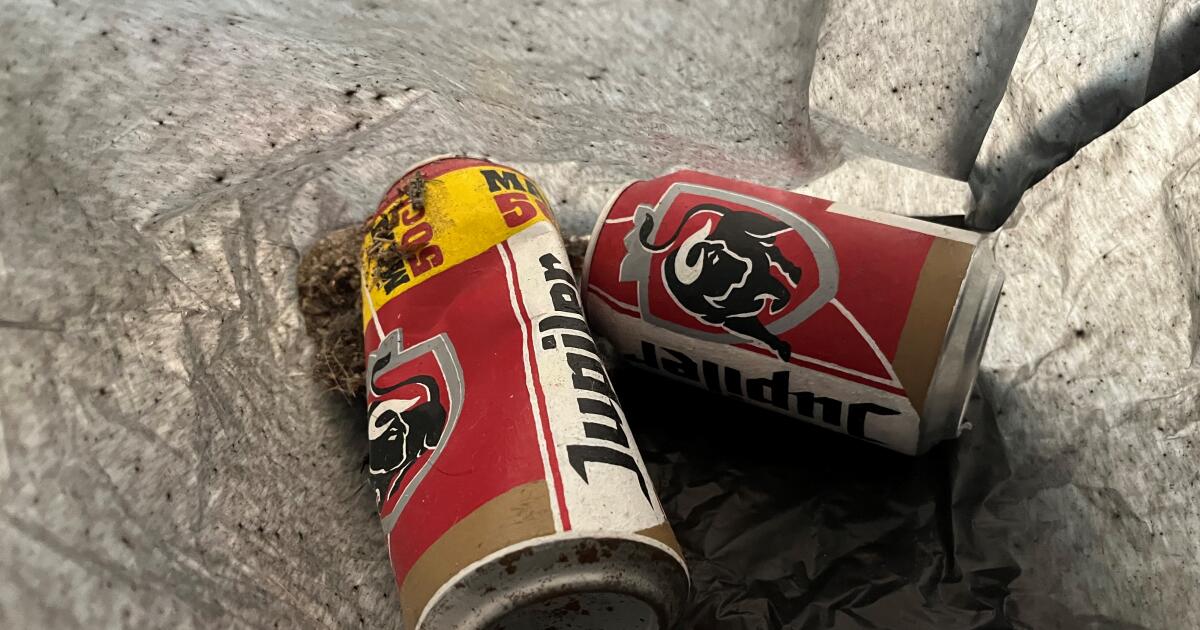
 Entertainment1 week ago
Entertainment1 week agoHold my beer can: Museum says a worker thought unique art installation was trash
-

 Entertainment1 week ago
Entertainment1 week ago'The Office' star Jenna Fischer reveals private breast cancer battle: 'I am cancer free'
-
/cdn.vox-cdn.com/uploads/chorus_asset/file/25673932/462754179_560996103109958_6880455562272353471_n.jpg)
/cdn.vox-cdn.com/uploads/chorus_asset/file/25673932/462754179_560996103109958_6880455562272353471_n.jpg) Technology5 days ago
Technology5 days agoMeta suggests AI Northern Lights pics are as good as the real thing
-

 Technology1 week ago
Technology1 week agoScammers exploit grief with fake funeral streaming on Facebook
-

 Lifestyle5 days ago
Lifestyle5 days agoIs the free speech debate dead? Plus, the devil! : It's Been a Minute
-
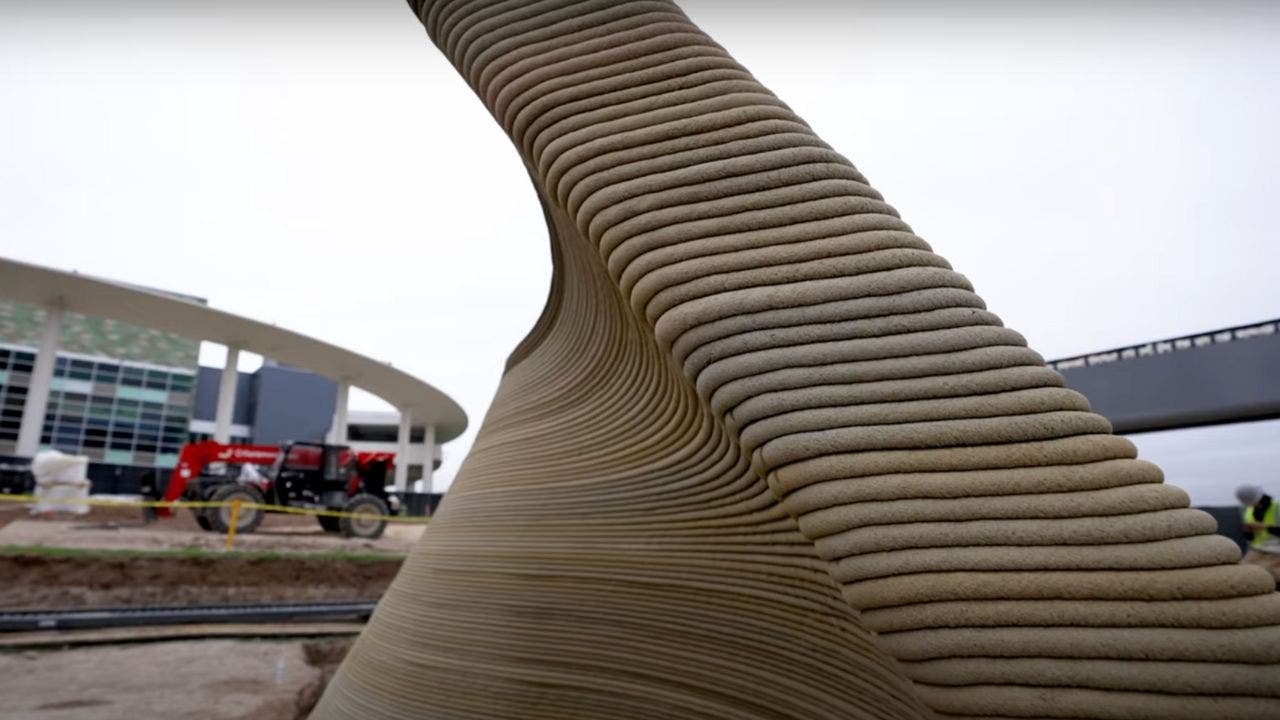
 Technology4 days ago
Technology4 days agoThis 3D-printed Texas hotel is shaking up the construction industry
-

 Lifestyle4 days ago
Lifestyle4 days agoHow one Afro-Colombian community honors their ancestry
-
Business1 day ago
10 million pounds of meat and poultry recalled from Trader Joe's and others in latest listeria outbreak










